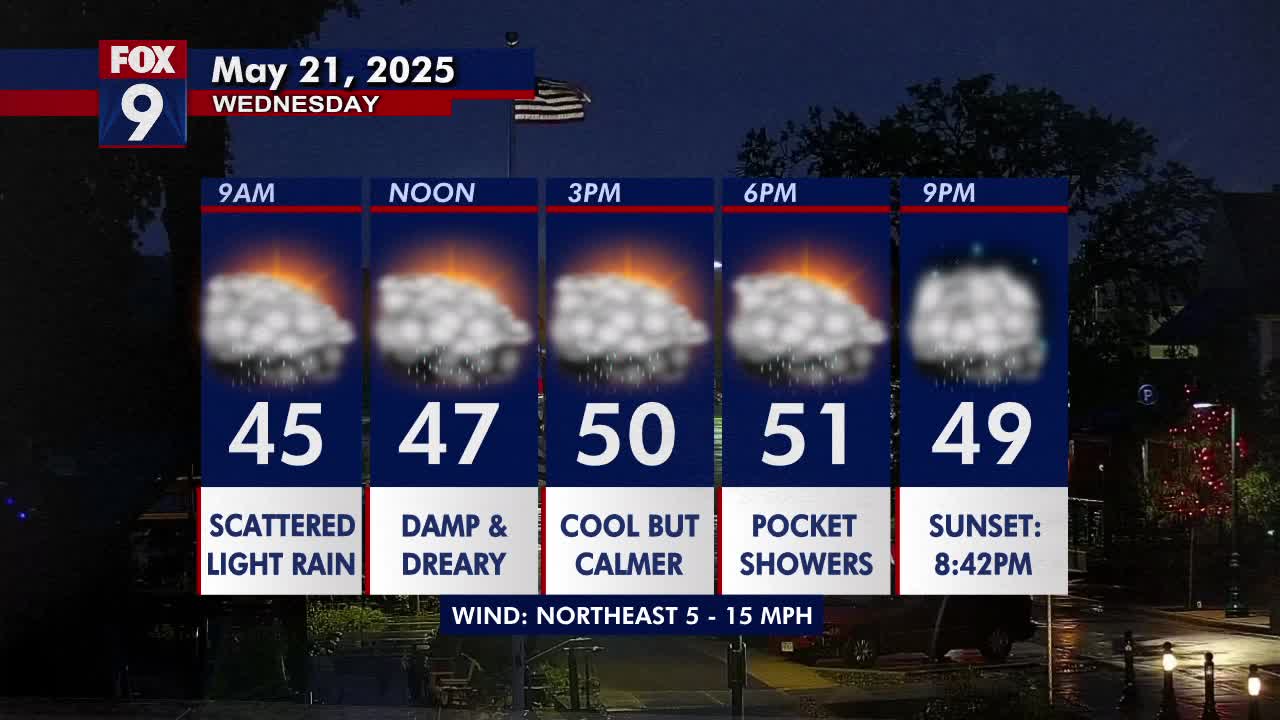Technology
The Beats Studio Pro are down to $180, nearly matching their all-time low
/cdn.vox-cdn.com/uploads/chorus_asset/file/24796017/DSCF2608_Enhanced_NR.jpg)
If you’re not an audiophile and can’t otherwise afford to splurge on a substantial pair of headphones like the AirPods Max or the new Sonos Ace headphones, a pair of Beats can do the job just fine. The brand’s headphones consistently sound pretty good and have kept up well with the times under Apple’s stewardship. You can consider the Beats Studio Pro the pinnacle of the line right now, and the flagship over-ear pair are nearly matching their all-time low price at around $179.95 ($170 off) at Amazon and Best Buy. That’s only $10 more than the all-time low price we saw during Black Friday.
For example, these headphones are more adaptable than most across the mobile ecosystem duopoly currently ruled by iOS and Android. On iOS, they support key features like one-touch pairing, Siri, spatial audio with dynamic head tracking, Find My, and iCloud sync. On Android, you also get Fast Pair, Find My Device support, and automatic pairing and seamless audio switching between Android devices and Chromebooks. Plus, you get better active noise cancellation and transparency mode compared to the Beats Studio 3 they replaced, not to mention lossless USB-C audio (although you give up the aforementioned audio features when using it).

Technology
AMD’s new RX 9060 XT looks set to challenge Nvidia’s RTX 5060

AMD is officially announcing its Radeon RX 9060 XT GPU at Computex today. Like the number implies, this graphics card will challenge Nvidia’s recently released RTX 5060 and RTX 5060 Ti, with AMD offering models with 8GB or 16GB of VRAM. AMD is launching both models on June 5th, with the 8GB variant priced at $299, with the 16GB version priced at $349.
AMD is following Nvidia’s controversial choice to ship a modern GPU with just 8GB of VRAM in the year 2025. The 8GB of VRAM debate has been raging for months now, particularly because of the latest games that can be very demanding on the memory side. AMD is following in Nvidia’s footsteps, though, so it’ll be interesting to see what reviewers make of both cards in this important part of the market.
The RX 9060 XT will ship with 32 RDNA 4 compute units, a boost clock of 3.13GHz, and support for DisplayPort 2.1a and HDMI 2.1b. The total board power is between 150 watts and 182 watts, depending on the model. AMD claims its 16GB version of the RX 9060 XT will be around 6 percent faster than Nvidia’s RTX 5060 Ti at 1440p resolution, based on 40 games that AMD has tested itself.
We’re still waiting to hear how the RTX 5060 stacks up, because oddly, Nvidia launched its latest 50-series GPU yesterday without any reviews available. The GPU maker had reportedly prevented reviewers from obtaining the necessary driver to test the RTX 5060 ahead of the release date, presumably because it’s worried about the paltry 8GB of VRAM spec.
While the 8GB of VRAM choice for both Nvidia and AMD is controversial, Nvidia has managed to spark a further wave of outrage from PC gaming YouTubers over comments it has made to Gamers Nexus. In a 22-minute video, Gamers Nexus discusses the pressure from Nvidia to include Multi Frame Generation (MFG) in benchmarks against competitor cards that don’t have a similar feature. Gamers Nexus (GN) alleges that Nvidia has even implied that it would revoke access to interview Nvidia engineers unless the channel discussed MFG more.
Update, May 21st: Article updated with pricing and release date information that AMD didn’t share with The Verge ahead of its press conference.
Technology
Peek-a-boo, Big Tech sees you: Expert warns just 20 cloud images can make an AI deepfake video of your child

Parents love capturing their kids’ big moments, from first steps to birthday candles.
But a new study out of the U.K. shows many of those treasured images may be scanned, analyzed and turned into data by cloud storage services, and nearly half of parents don’t even realize it.
A survey of 2,019 U.K. parents, conducted by Perspectus Global and commissioned by Swiss privacy tech company Proton, found that 48% of parents were unaware providers like Google Photos, Apple iCloud, Amazon Photos and Dropbox can access and analyze the photos they upload.
TEENS ARE NOW USING AI CHATBOTS TO CREATE AND SPREAD NUDE IMAGES OF CLASSMATES, ALARMING EDUCATION EXPERTS
First lady Melania Trump, joined by President Donald Trump, delivers remarks before President Trump signed the Take it Down Act into law in the Rose Garden of the White House May 19, 2025, in Washington, D.C. (Chip Somodevilla/Getty Images)
These companies use artificial intelligence to sort images into albums, recognize faces and locations and suggest memories. While convenient, the same technology can also have more dangerous uses, like deepfake videos.
Professor Carsten Maple, a cybersecurity expert at the University of Warwick, warns that, with as few as 20 photos, AI tools can create a convincing digital clone of a person, including deepfake videos. These tools don’t need a high-resolution scan or video footage, just a handful of everyday pictures in the cloud.
“Parents are unwittingly opening their children up to possible exploitation by criminals who want to use their data for their own purposes,” Maple told the Edinburgh Evening News.
He added that even mundane photos, like a child at school or in the backyard, can reveal names and locations. Fifty-three percent of parents surveyed had no idea this was possible.
PROTECTING YOUR DAUGHTER FROM DEEPFAKES AND ONLINE ABUSE

President Donald Trump invited first lady Melania Trump to sign the new anti-revenge porn act she helped usher through to the finish line during a signing ceremony at the White House’s Rose Garden Monday afternoon. (Chip Somodevilla/Getty Images)
Over half of parents, 56%, have automatic photo uploads enabled, meaning their phones constantly send new images to the cloud without ever having to tap “upload.”
WHAT IS ARTIFICIAL INTELLIGENCE (AI)?
Even without deepfakes, data collection is extensive. Only 43% of parents knew cloud services collect metadata like time, date and location, and just 36% surveyed were aware that these companies analyze the contents of photos too.
Concern is catching up to convenience. Nearly three in four parents (72%) surveyed said photo privacy is important, and 69% acknowledged the risks of digital footprints left by storing family photos online.

First lady Melania Trump walks to a meeting to urge passage of the Take It Down Act by the U.S. Senate at the U.S. Capitol in Washington, DC, March 3, 2025. (Saul Loeb/AFP via Getty Images)
Though the study was conducted in the U.K., its findings apply globally. American families use the same technology platforms and face the same questions: Where are kids’ photos going? Who is looking at them? And what could they be turned into?
In the age of AI, a family photo isn’t just a memory, it’s also data which can be scanned, stored, sold and, increasingly, manipulated into deepfakes.
Perspectus Global did not immediately return Fox News Digital’s request for comment.
Technology
Nearly half of streaming subscriptions are for plans with ads

Ad-supported tiers are proving to be popular with streaming customers. New data from subscription analyst firm Antenna shows that 46 percent of Discovery Plus, Disney Plus, Hulu, HBO Max, Netflix, Paramount Plus, and Peacock subscribers in the US are paying for ad-supported plans, and that around 75 percent of subscribers have at least tried them.
Many streaming services have ad-supported tiers — HBO Max launched its $9.99 ad plan in 2021, followed by Netflix’s $6.99 and Disney Plus’s $7.99 plans in 2022, for example. But in its Q2 2025 State of Subscriptions report, Antenna notes that half of the big streaming platforms it analyzed didn’t offer an ad-supported plan two years ago, and only a third of subscriptions to services that did were for an ad plan. Comparatively, 71 percent of net subscriber additions over the last nine quarters have been driven by ad plans according to Antenna’s data, with no meaningful differences in demographic and loyalty compared to ad-free subscribers.
It’s a win-win for streaming companies that can reap the benefits of both additional advertising revenue and growth from providing more affordable memberships. Antenna reports that 65 percent of users who had subscribed to ad-supported plans were completely new to the streaming service, with users who had switched from pricer ad-free tiers accounting for only 11 percent of subscriptions.
-

 Technology1 week ago
Technology1 week agoMexico is suing Google over how it’s labeling the Gulf of Mexico
-

 Politics1 week ago
Politics1 week agoDHS says Massachusetts city council member 'incited chaos' as ICE arrested 'violent criminal alien'
-

 Education1 week ago
Education1 week agoA Professor’s Final Gift to Her Students: Her Life Savings
-

 Politics1 week ago
Politics1 week agoPresident Trump takes on 'Big Pharma' by signing executive order to lower drug prices
-

 Education1 week ago
Education1 week agoVideo: Tufts Student Speaks Publicly After Release From Immigration Detention
-

 News7 days ago
News7 days agoAs Harvard Battles Trump, Its President Will Take a 25% Pay Cut
-

 Culture1 week ago
Culture1 week agoTest Yourself on Memorable Lines From Popular Novels
-

 News1 week ago
News1 week agoWhy Trump Suddenly Declared Victory Over the Houthi Militia












